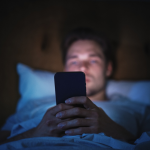Medically reviewed by:
Cit Carney, Psychosexual Therapist
What is porn addiction?
Pornography use can be just as much of a problem as any activity that is done to an extreme.
Some people feel like they have an irresistible urge to use pornography, or that they use pornography so much that it creates problems for them. They might describe themselves as being addicted to porn but they probably do not have a diagnosable mental health disorder.
The World Health Organisation’s International Statistical Classification of Diseases (ICD-11) includes Compulsive Sexual Behavioural Disorder, which could include uncontrollable and repetitive persistent pornography use accompanied by clinically significant distress and functional impairment (e.g. job loss). This is known as ‘problematic pornography use’.
What are the symptoms of problematic pornography use?
There is no exact amount of time or number of occasions that can be used as a cut-off for working out whether someone’s pornography use is problematic. Since it’s different for everybody, health practitioners need to ask questions about pornography use and its impact on day-to-day life.
Feeling bad or distressed just because of moral judgements (e.g. cultural or religious disapproval) related to pornography use does not count as Compulsive Sexual Behaviour Disorder but distress directly resulting from the negative effects on normal function does.
Subscribe to our newsletter

What problems can be caused by porn addiction?
There are moral, religious and other social concerns about pornography that can affect the way that people think about their use of it. Some people may have concerns because of conflict between their beliefs about pornography (e.g. it is immoral) and their use of it.
Feelings of shame or guilt about pornography use can lead to social withdrawal, resulting in social isolation and/or loneliness.
Excessive use of pornography might lead to neglect of responsibilities associated with professional, social or family life, and with a loss of interest in other activities (e.g. hobbies, sport).
Emotional connection and intimacy with partners may be decreased by pornography use, and libido (sex drive) can be reduced. Erectile dysfunction and delayed ejaculation during real-world sexual encounters can occur because the level of stimulation (e.g. visual, physical) does not match what is achieved during pornography use. The unrealistic scenarios, physical appearances and sexual activities depicted in pornography can lead to dissatisfaction with real-life relationships and sexual activity. Pornography can also result in concerns about personal body image or sexual performance. Secretive behaviour or lies about pornography use can result in feelings of betrayal for partners and can damage personal relationships.
How common is problematic pornography use?
Most Australian men use pornography but less than 5% think they are addicted.
What treatments are used for problematic pornography use?
Psychological therapies are the first choice for treatment of problems with pornography use. Cognitive behavioural therapy (CBT) and acceptance and commitment therapy (ACT) can be successful for treating problematic pornography use. There is not good evidence to support the use of medications unless there are accompanying mental health problems.
What should I do if I am concerned about my pornography use?
Setting boundaries around how often you use pornography, or the type of pornography you use, might help to change your behaviour and reduce your concerns.
If you have trouble controlling your use of pornography, you should seek help from a mental health professional. You could ask your GP for a referral to a psychologist, counsellor or sex therapist.













